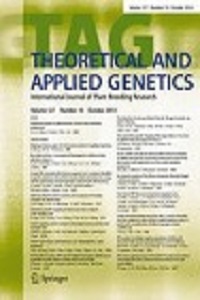Fine‑mapping of angular leaf spot resistance gene Phg‑2 in common bean and development of molecular breeding tools
Common bean (Phaseolus vulgaris L.) is an important food legume in Latin America, Asia and Africa. It is an important source of protein, carbohydrates and micro-minerals, particularly for smallholder farmers. Common bean productivity is affected by angular leaf spot (ALS) disease caused by the pathogenic fungus Pseudocercospora griseola, resulting in significant yield losses, particularly in low-input smallholder farming systems in the tropics. The ALS resistance gene Phg-2, which was found in several highly resistant common bean genotypes, was investigated in crosses between Mesoamerican pre-breeding lines and elite Andean breeding lines. Next-generation sequencing (NGS) data sets were used to design new SNP-based molecular markers. The Phg-2 locus was confirmed to be the major locus providing ALS resistance in these crosses. The locus was fine-mapped to a 409-Kbp region on chromosome 8. Two clusters of highly related LRR genes were identified in this region, which are the best candidate genes for Phg-2. Molecular markers were identified that are closely linked to the Phg-2 resistance gene and also highly specific to the donor germplasm. Marker-assisted selection (MAS) was used to introgress the Phg-2 resistance locus into Andean breeding germplasm using MAB lines. The usefulness of molecular markers in MAS was confirmed in several field evaluations in complex breeding crosses, under inoculation with different ALS pathotypes. This project demonstrates that NGS data are a powerful tool for the characterization of genetic loci and can be applied in the development of breeding tools.

